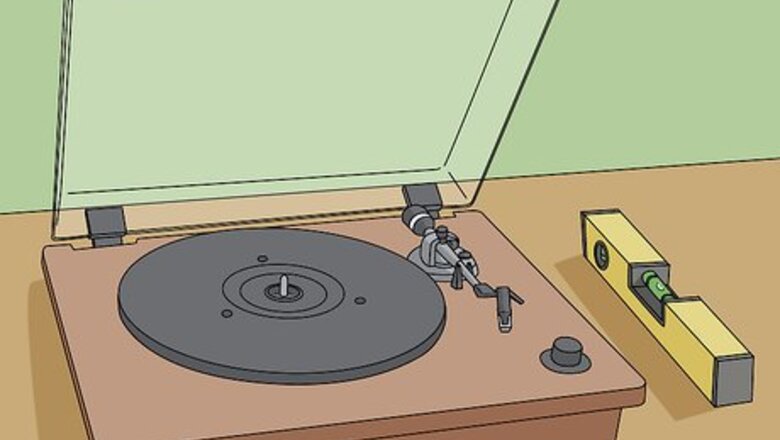
views
Setting Up the Record Player
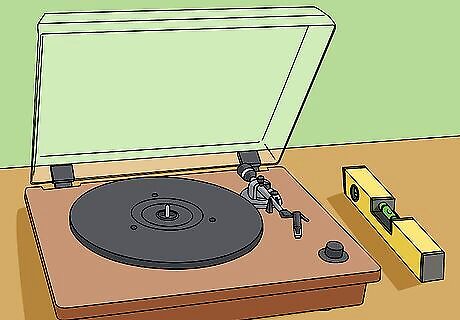
Place the record player on a flat, level surface. For a record player to work properly, it needs to sit on a flat surface and be completely level. You will need a level with a bubble vial in the middle. Put the level on the table or shelf where you want the record player to sit. Adjust the furniture until the bubble appears in the middle of the vial. Once you see the bubble stay in the middle of the bubble vial, the surface is level. If the table, shelf or other surface is not completely level, you will never get the machine to work properly. You may need to put some wood shims underneath the furniture in order to get it level.
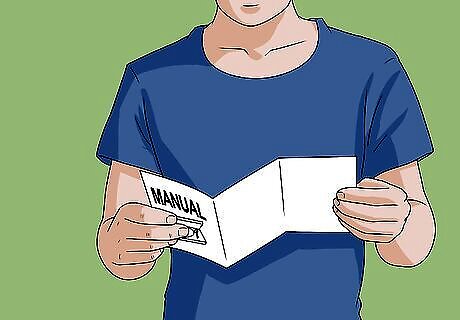
Familiarize yourself with the parts of your record player. You should find a diagram of your record player in the owner’s manual. Learn the different parts of your record player: Start/Stop button or knob, which you need to press to get your record playing or stopping. Cueing lever, which allows you to raise or lower the tone arm. Speed selector, which allows you to select either 33 or 45 revolutions per minute, depending on the speed indicated on your vinyl record. Record size selector on automatic record players. This selector allows you to choose whether you want to play a 12 or a 7-inch vinyl record. Tone arm and cartridge, which reads the music from the grooves on the vinyl record.
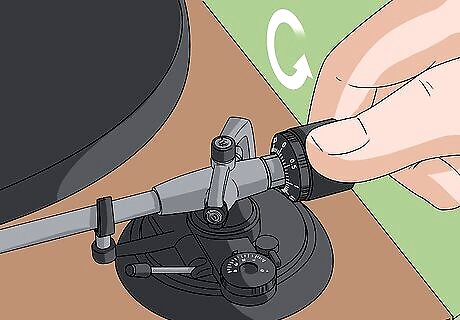
Adjust the tracking weight to manufacturer recommendations. The record player guide or owner’s manual should include specifications for the correct tracking weight. You should see a counter-weight at the back of the tone arm. Turn the counter-weight until it aligns with the tracking weight recommended in your owners manual. Finally, set the gauge to 0. For instance, if the manufacturer recommends 1.5 grams, you should adjust the counter-weight to 1.5 grams.
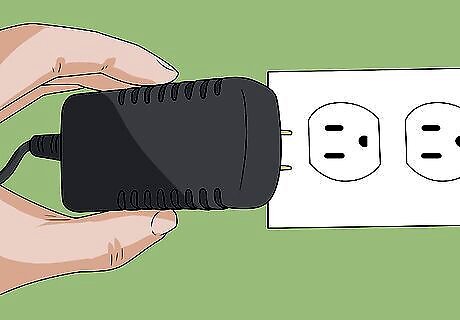
Plug in your record player. The record player requires electricity, so you will need to plug it into a secure outlet.
Playing a Record
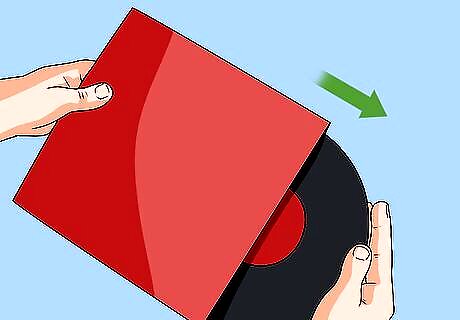
Take the record out of the sleeve. Place the palm of your right hand under the opening of the sleeve. Turn the sleeve upside down and let the record slide out onto your open palm. When you see the hole in the middle of the record, put a finger inside. Then, hold the record on the sides. Be careful not to hold onto the flat surface of the record, since it will get dirty and wear out faster.
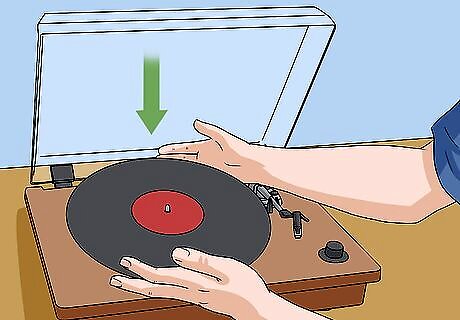
Place the record on the platter of your record player. Put the record on the platter of your record player, with the hole in the middle of the record aligned with the pin in the middle of the platter.
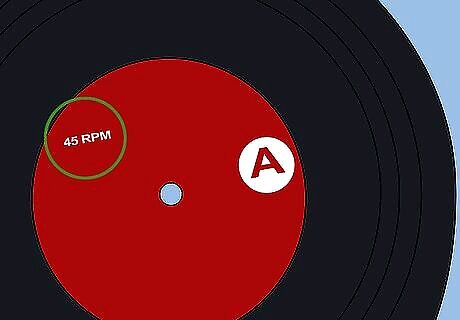
Make sure the speed is correct. On the middle of your record, you should see the speed indicated. Typically, a twelve inch record will play at 33 1/3rd revolutions per minute and a seven inch record will play at 45 revolutions per minute. After determining the correct speed for the record, make sure your record player is adjusted for this speed by clicking the speed selector button. Some 12 inch vinyl records play at 45 revolutions per minute. To adjust the speed on some manual players, you may have to take off the platter. Then, move the belt to the appropriate groove for either 33 1/3rd or 45 revolutions per minute. The appropriate groove should be indicated in your owner’s manual.
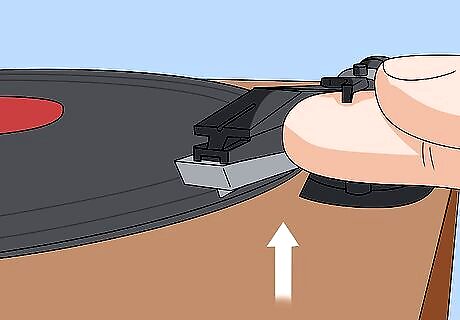
Press play and raise the cueing lever. For a manual turntable, you will need to press play and then press the cueing lever for the tone arm. The record should start spinning and the tone arm should rise.
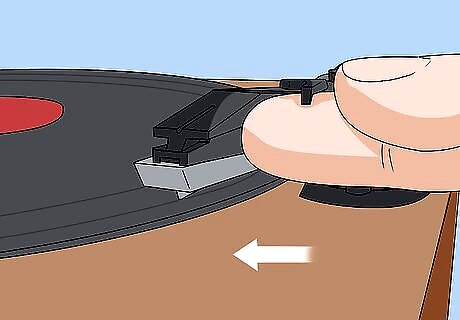
Align the tone arm with the record. Move the tone arm over to the side of the record. Look over the top of the record player to align the tone arm with the outside of the record so that it can fall down into the first groove on the record.
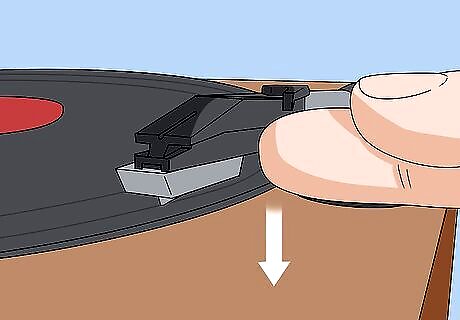
Drop the tone arm down to the record. Once the tone arm is aligned with the record, press the cueing lever down to let the tone arm fall down to the record. The record will start playing. If you drop the tone arm down and it misses the side of the record or starts playing the wrong song, press the cueing lever to raise the tone arm back up. Then, try to align the tone arm with the side of the record and drop it down again.
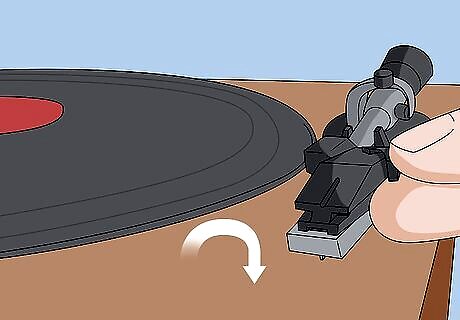
Stop the music. Unlike playing an MP3 player or a CD player, you need to manually stop a record player. You will need to raise the tone arm by pulling up the cueing lever. Then, move the tone arm over to the resting place and press the stop button or switch.
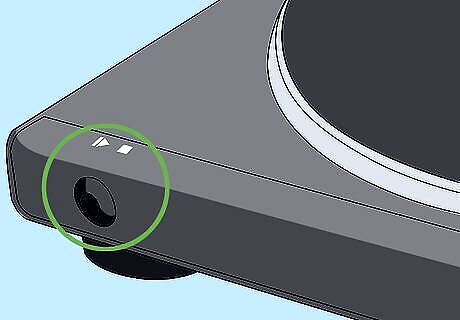
Play the music on an automatic turntable. If you are using an automatic turntable, you just need to press the play/stop button. The record will automatically play. When the side of the record is finished, press stop.
Making Adjustments
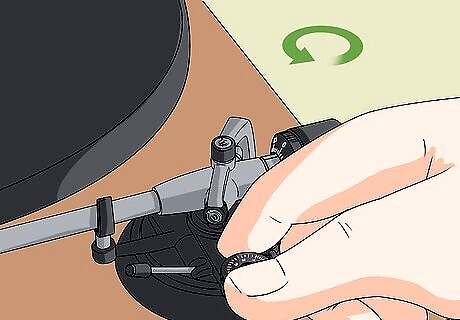
Adjust the anti-skating knob. The anti-skating mechanism makes sure that the tone arm does not move forward or backwards and skip over the record. If your record is skipping, turn the anti-skating mechanism until the tone arm stays in place while the record is playing. It is best to set it to a quarter of a gram or less.
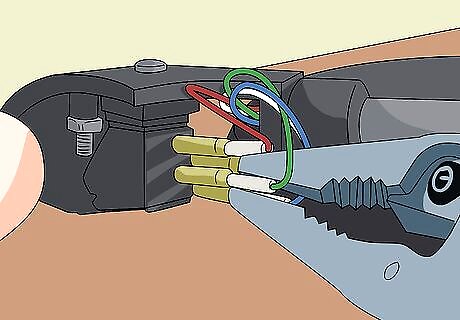
Put in a new cartridge. If you recently purchased a new cartridge for your record player, you will need a small screwdriver and some patience to install it. Align the red, blue, green and white wires with the terminals marked for these colors on the back of the cartridge. Once the wires are inserted, use a hex screwdriver to screw the cartridge into the headshell.

Clean your records. To keep them playing smoothly, it is important to keep your records clean. Use a microfibre cloth, record cleaning brush or an anti-static record cleaning brush to clean your records. If the records look dusty, it is time to clean them. If you have a record cleaning brush and a manual player, play the record without putting the tone arm down. Use the brush to remove any dust while the record is moving.










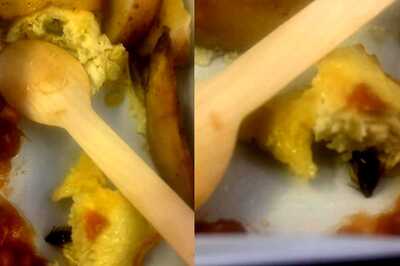




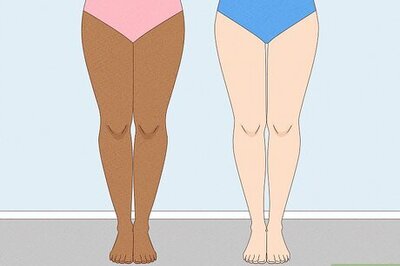




Comments
0 comment